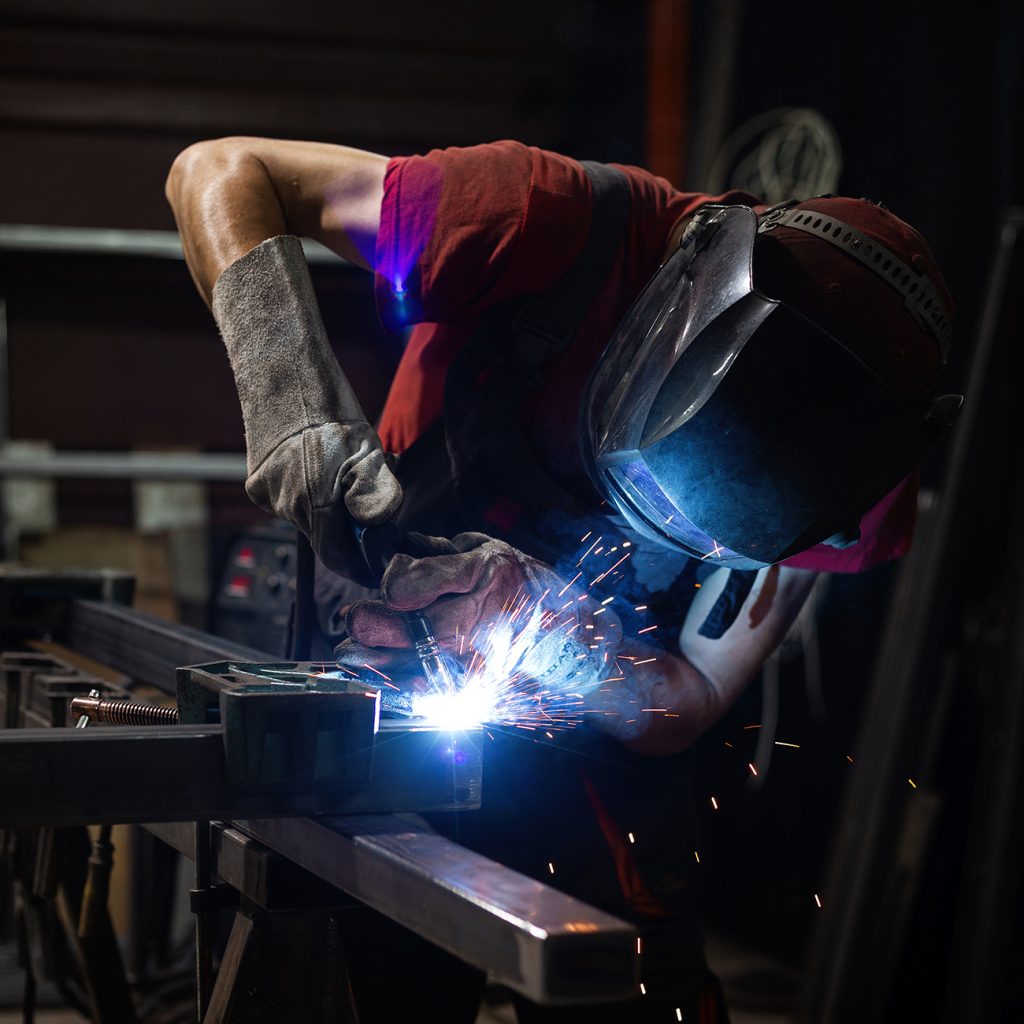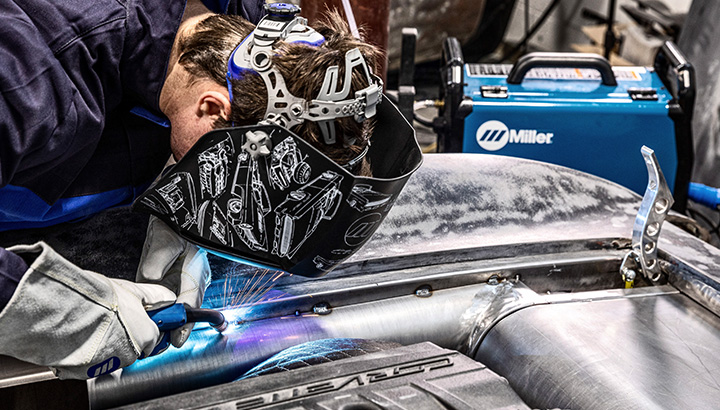Typical Welding Fixing Issues and Just How to Address Them Efficiently
Welding fixings frequently encounter a variety of problems that can threaten the integrity of the end product. Usual troubles consist of insufficient penetration, porosity, and imbalance, to name a few. Each problem offers unique obstacles that need particular approaches for resolution. Understanding these concerns is essential for welders aiming to boost their results and skills. This discussion will explore these typical welding repair service issues and reliable techniques to resolve them.
Insufficient Penetration
Insufficient penetration takes place when the weld steel stops working to completely fuse with the base product, leading to weak joints and prospective architectural failings. This issue often originates from inadequate heat input, inaccurate electrode angle, or incorrect welding speed. Welders might experience poor penetration because of a mistake of the essential parameters for a certain material thickness or kind. Furthermore, contamination on the base product's surface area can prevent reliable bonding, exacerbating the trouble. To resolve insufficient infiltration, welders ought to ensure ideal setups on their equipment and preserve a clean job surface. Normal examination of welds is recommended to determine any kind of deficiencies early, permitting timely adjustments and the prevention of compromised structural stability in bonded assemblies.
Porosity
Porosity is an usual problem in welded joints that manifests as tiny gas bubbles caught within the weld steel. This issue can endanger the stability of the weld, resulting in minimized strength and potential failing under tension. Belgrade. Porosity generally arises from contamination, dampness, or improper welding methods, which enable gases to get away into the molten weld swimming pool. To address porosity, welders ought to assure proper surface preparation, keep a tidy functioning atmosphere, and make use of ideal welding criteria. In addition, picking the right filler material and protecting gas can minimize gas entrapment. Regular assessment and screening of welds can help identify porosity early, assuring timely rehabilitative activities are taken, therefore preserving the top quality and integrity of the bonded framework
Misalignment
Imbalance in welding can develop from numerous factors, including improper setup and thermal growth. Understanding the origin is crucial for effective resolution. Several adjustment methods are readily available to realign parts and ensure architectural stability.
Causes of Imbalance
Welding misalignment typically comes from a range of underlying concerns that can compromise structural integrity. One main cause is inappropriate fit-up of elements before welding, which can lead to gaps and unequal surface areas. Variants in thermal expansion during the welding process can additionally result in distortion, particularly if the products being joined have various coefficients of expansion. In addition, inadequate fixturing and securing may fall short to hold parts safely in position, causing motion during welding. Badly kept equipment, including welding devices and devices, might introduce variances in the weld bead, further adding to imbalance. Lastly, driver mistake, stemming from inadequate training or experience, can likewise play a significant function in producing misaligned welds.
Improvement Techniques Readily Available
Resolving imbalance effectively calls for a combination of corrective techniques tailored to the particular concerns at hand. One typical technique is making use of jigs or fixtures to hold components in the right position during welding, making sure constant positioning. In addition, preheating the materials can help in reducing distortion and improve fit-up. For substantial imbalance, mechanical adjustment techniques, such as using hydraulic jacks or clamps, can be employed to fix the position prior to welding. Post-weld warm therapy may also be needed to relieve stress and anxieties brought on by misalignment. Mindful inspection and change throughout the arrangement stage can avoid misalignment problems from coming to be considerable issues, advertising a smoother welding procedure and improving total architectural stability.
Distortion
Distortion is an usual obstacle in welding that can develop from numerous factors, including uneven cooling and heating. Recognizing the reasons for distortion is crucial for carrying out efficient avoidance techniques. Resolving this issue not just boosts architectural stability however additionally enhances the overall quality of the weld.
Reasons for Distortion
When subjected to the intense warm of welding, materials frequently undertake changes that can bring about distortion. This sensation mainly develops from thermal expansion and tightening throughout the welding process. As the weld area heats up, the product increases; upon air conditioning, it contracts, which can produce inner stresses. Furthermore, irregular heating across a work surface can aggravate these tensions, resulting in bending or bending. The kind of product also plays a considerable function; steels with differing thermal conductivity and coefficients of growth might respond in different ways, go to my blog resulting in unforeseeable distortions. Poor joint design and insufficient fixturing can add to imbalance throughout welding, raising the possibility of distortion. Understanding these reasons is necessary for efficient welding fixing and prevention strategies.
Prevention Techniques
Effective prevention methods for distortion during welding focus on controlling warm input and making sure appropriate joint design. Preserving a regular warm input aids to reduce thermal expansion and contraction, which can cause distortion. Using techniques such as pre-heating the workpiece can additionally decrease the temperature slope, promoting consistent home heating. Additionally, choosing appropriate joint designs, such as T-joints or lap joints, can enhance stability and reduce stress concentrations. Applying appropriate fixturing to protect the workpieces in area further help in preserving alignment during the welding process. Lastly, staggered welding series can distribute warmth much more uniformly, preventing local distortion. By applying these techniques, welders can considerably lower the likelihood of distortion and improve the total top quality of their welds.
Cracking
Breaking is a typical issue come across in welding repairs, commonly resulting from different aspects such as inappropriate cooling rates, product option, or inadequate joint preparation. The event of fractures can significantly compromise the stability of the weld, causing prospective failures during procedure. To resolve this issue, welders have to initially examine the origin, making sure that materials are suitable and properly picked for the particular application. Additionally, controlling the cooling price throughout the welding process is necessary; rapid air conditioning can induce tension and bring about cracking. Appropriate joint style and preparation additionally add to lessening the risk. Executing these techniques can enhance weld high quality and longevity, eventually decreasing the chance of splitting in completed weldments.

Insufficient Fusion
A significant concern in welding fixings is incomplete blend, which happens when the weld metal does not adequately bond with the base product or previous weld passes - Montana Mobile Welding and Repair Welding. This issue can result in weaknesses in the joint, potentially jeopardizing the integrity of the bonded structure. Aspects adding to insufficient combination consist of inadequate warm input, inappropriate welding strategy, and contamination of the surface areas being signed up with. To address this concern efficiently, welders ought to guarantee correct pre-weld cleansing and surface area preparation, in addition to adjust their welding criteria to accomplish adequate infiltration and fusion. Normal inspection throughout my response the welding procedure can likewise aid determine incomplete fusion early, permitting for prompt rehabilitative actions to boost the general i thought about this top quality of the weld
Overheating
While welding fixings can improve architectural honesty, overheating offers a significant obstacle that can bring about material destruction. Too much warm during welding can alter the mechanical homes of metals, causing lowered toughness, enhanced brittleness, and warping. This phenomenon is specifically important in high-stress applications where architectural integrity is extremely important. Recognizing overheating can include aesthetic examinations for staining or distortion, in addition to checking temperature during the welding process. To mitigate the risks linked with getting too hot, welders should utilize appropriate strategies, such as controlling warmth input, changing traveling speed, and making use of ideal filler products. Furthermore, implementing pre- and post-weld heat therapies can assist recover product residential or commercial properties and boost the general quality of the repair, making sure long-term efficiency and security.
Frequently Asked Concerns
What Are the Typical Signs of a Welding Issue?

How Can I Test My Welds for High quality?
To test welds for high quality, one can use aesthetic examinations, ultrasonic testing, and radiographic approaches. Each technique guarantees architectural stability, determines issues, and verifies adherence to specified requirements, ultimately boosting the dependability of the welded joints.
What Safety Safety Measures Should I Take While Welding?
When welding, one ought to prioritize safety by putting on appropriate individual safety equipment, guaranteeing correct ventilation, safeguarding combustible materials away, maintaining a tidy work area, and being conscious of environments to prevent injuries and crashes.
Can I Repair a Weld Without Redoing the Entire Joint?
Repairing a weld without remodeling the whole joint is possible, relying on the damages (Montana Mobile Welding and Repair Belgrade Welding). Techniques such as grinding, including filler material, or utilizing a welding procedure can successfully attend to details problems while maintaining the bordering framework
What Tools Are Essential for Efficient Welding Services?
Necessary devices for reliable welding repairs include a welding maker, wire brush, grinder, protective equipment, clamps, and filler products. Each tool plays a crucial function in guaranteeing top quality and safety and security during the repair procedure. Porosity commonly emerges from contamination, dampness, or incorrect welding strategies, which allow gases to leave right into the liquified weld pool. Badly kept tools, consisting of welding makers and tools, may present inconsistencies in the weld grain, further adding to imbalance. When subjected to the intense heat of welding, materials usually go through adjustments that can lead to distortion. Breaking is a common problem experienced in welding fixings, often resulting from different aspects such as improper cooling rates, material option, or inadequate joint preparation. A considerable concern in welding repair services is insufficient combination, which takes place when the weld metal does not appropriately bond with the base material or previous weld passes.